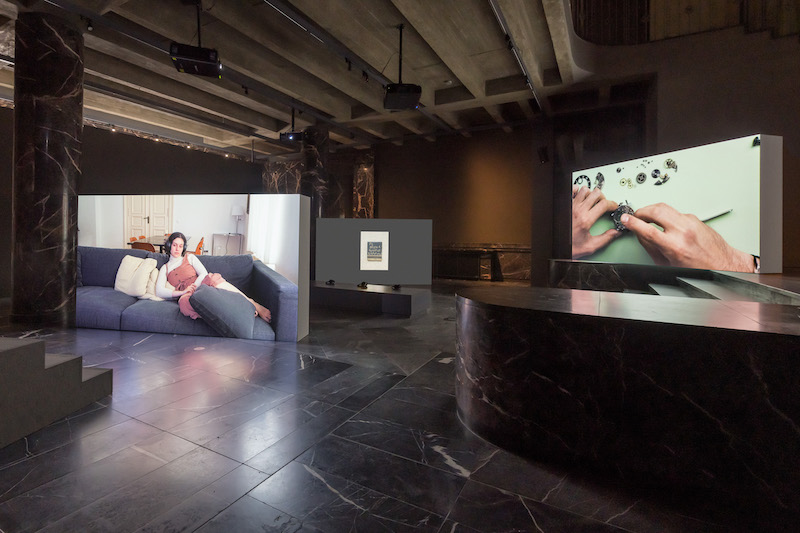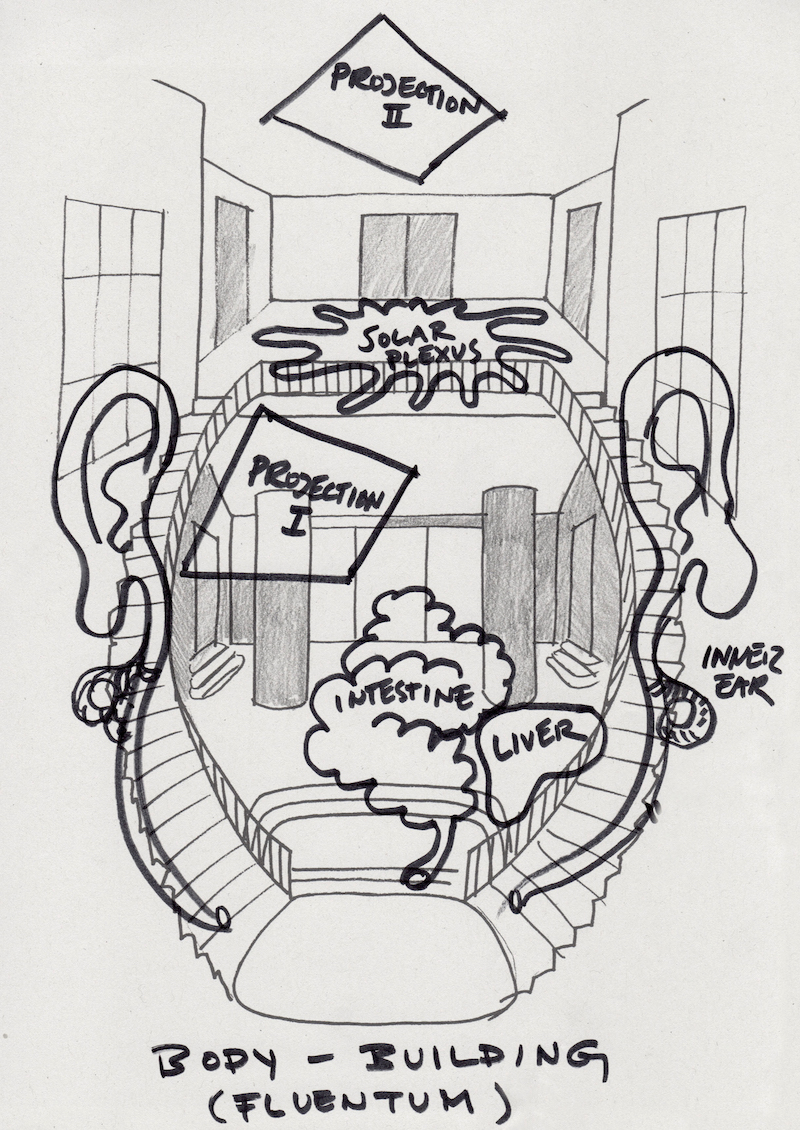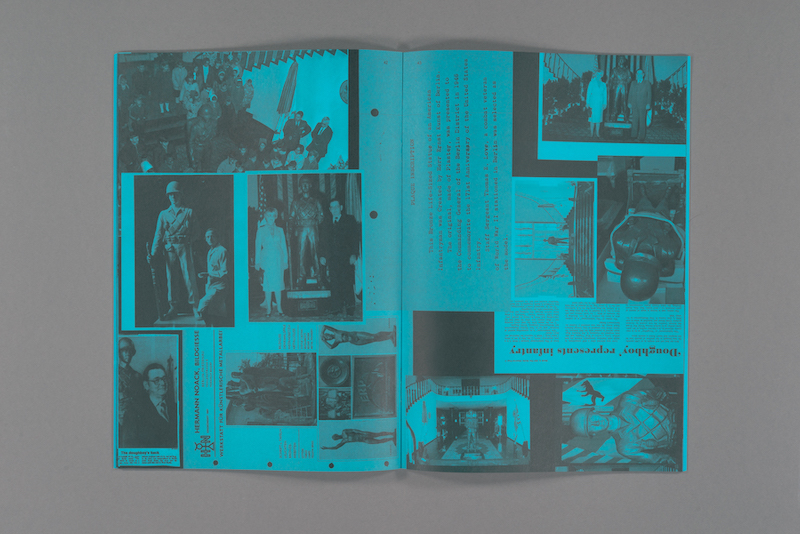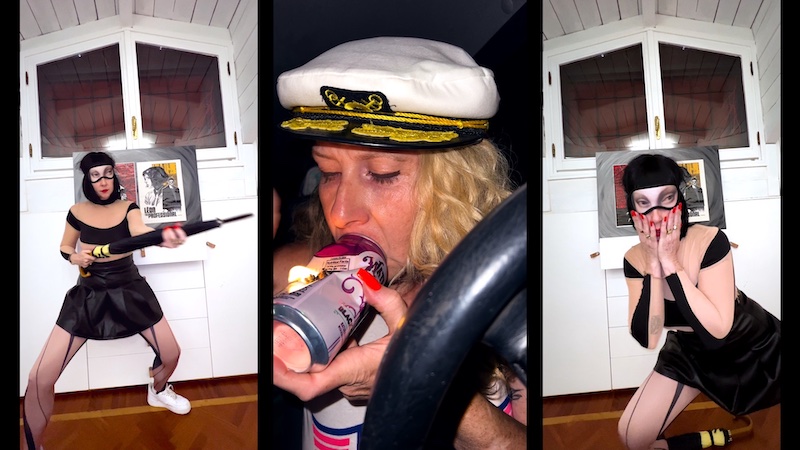by Annalisa Giacinti // Apr. 21, 2023
In a world that’s increasingly globalized while more and more fragmented—mediated by Instagram’s ever-fluctuating grid and the short, scrollable videos of TikTok—engaging with history and the past often appears a too old-fashioned endeavour. It’s one that Junia Thiede and Dennis Brzek have instead turned into the mission of their careers. The artistic director and curator of Fluentum began shaping the role this cultural institution would later fulfil in 2019, three years after entrepreneur and collector Markus Hannebauer had purchased it. While showcasing contemporary art with a special interest in time-based media, such as film and video, Thiede and Brzek’s goal is to interact with the historical past of Fluentum’s building, acknowledging its weighted heritage and, at the same time, challenging its authority. Based on the premise that history is not an untouchable entity but can be approached dialogically and reinscribed, Fluentum invites independent artists to do so through their practice and performances. ‘In Medias Res: Media, (Still) Moving’ is the first project that deals with the political legacy of the building, and consists of three exhibitions as well as a series of publications. ‘Trash The Musical’ by Loretta Fahrenholz opens on April 26th and is the last chapter of the series. We spoke with Thiede and Brzek to learn more about the project and the reasons what inspired its thematics.

‘Time Without End,’ 2021, installation view // Photo by Stefan Korte, courtesy of Fluentum
Annalisa Giacinti: The building where Fluentum is located is a particularly poignant one, history-wise. How did you come to take over the space and how much of its historical weight plays a role in the exhibitions you curate?
Junia Thiede: Markus Hannebauer bought the building in 2016 and founded Fluentum in 2019. Hence, Fluentum is a relatively young institution, still in the process of defining itself, setting its priorities and envisioning the roles it should take on. With its undeniably imposing presence, chock full of National Socialist past as well as a specific Berlin urban history, the building that hosts Fluentum today naturally sets important impulses within this process of self-discovery. Engaging with the site triggers numerous questions and concerns that are best grappled with collaboratively and dialogically.
To approach this, I invited Dennis Brzek to develop a comprehensive, multi-year project with me, intentionally set at the beginning of Fluentum’s trajectory. From a curatorial point of view, it would simply be absurd to try to dismiss the historical context of the building. In its somewhat pompous appearance, it is the elephant in the room and part of the heritage that Fluentum has to deal with. Of course, this doesn’t mean that every artist we work with is required to undertake a quest for historical traces. In its concreteness, the site also functions as a surface to project broader questions onto the forms to which cultural memory attaches itself, and how history appears in the now. It is these questions that are crucial, especially for Fluentum as an institution with its focus on time-based media.
AG: What inspired the concept behind ‘In Media Res: Media, (Still) Moving’?
Dennis Brzek: It’s all in a name, so let’s start there. “In medias res” is sort of a saying in German—to “go into medias res” describes stepping right into the matter to be discussed—and it’s often used conversationally to cover up an awkward transition from small to deeper talk. That being said, it is also somewhat of a cliché to say, but we couldn’t resist the temptation to hint at the double meaning of media here, as video and film play such a pivotal role. And this already gives you the fundamental idea that guided our work on this series: we wanted to understand Fluentum’s physical step into this historical site as a discursive step into its many layers. We felt that any exhibition taking place here was necessarily “in medias res,” within all things, no matter if we classified it as such or not; therefore, we wanted to stress this embedded-ness. It’s important for us to think about what mediates this history, that is: which media are used for reading, experiencing, writing history? We found that Fluentum’s specific focus on video and film actually allows us to interrogate media (not only time-based), and engage with time, continuity, disruption and the unfolding narratives of history, of our past, our present.

Blaise Kirschner: ‘UNICA,’ 2022, sketch for exhibition design // Photo courtesy of the artist
AG: What’s the reasoning behind the structure of the series?
DB: For us, it was always important to take our time and give artists time to work. When we started working on this project, we knew that institutional standards demanded an output, and instead of hiding from this demand, we tried to always incorporate the duration of the work we do. The tripartite structure of both the exhibitions and the accompanying publication series was therefore helpful in coming to terms with the time it takes to produce new works and new research.
We also want to stress that ‘In Medias Res’ is most of all focused on commissioning. The exhibitions are the most visual part of the program, the one that’s easiest to access and the one that lives on most prominently in its documentation. But, for us, the project mostly consisted of guiding and accompanying production, research, speaking with artists, finding small details in archives, being led by conversations. The series of publications are the most immediate representation of this personal and curatorial reckoning: we had to accept the fact that the first issue could not be both the first and final word on this matter. Its serial format rather operates as this constant reminder that things can be revised, edited and added.

‘In Medias Res #2: Architecture in Motion,’ 2022, excerpt // Photo courtesy of fineartprint.berlin/Jakob Zoche
AG: As you just mentioned, you curated an accompanying publication series alongside the exhibitions, for which you invited historians, writers and artists to contribute to your larger historical research. Could you explain how historiography influences your curatorial approach?
JT: A fact that has perhaps never been more obvious than today is that the past is not a tale told from some monolithic, authoritarian perspective. History gets served up in any number of different ways, the record can be recited always in another fashion, but the challenge is that sometimes the past doesn’t want to be found and wishes to remain elusive. The scattered and highly fragmentary record of the building’s history has largely determined our approach to the project, and has also anticipated the structure of the publications. In addition to scraping together the rather sparse material culled from various archives, it was and continues to be important for us to assemble various methods of approaching history because it’s these techniques that ultimately determine the outcome of historiography. An architectural historian brings their own toolbox, but with it we must factor in also their own set of instinctive reservations, as well as the limits of their own discipline, which are different for a documentary filmmaker or artist. Highlighting this methodological polyphony in relation to encountering a concrete historical subject seemed appropriate for us to respond to the fragments found, by adding more.

Loretta Fahrenholz: ‘Trash the Musical,’ 2023, video still // Photo courtesy of the artist
AG: Finally, can tell us a bit about Loretta Fahrenholz’s upcoming solo exhibition ‘Trash the Musical’?
DB: Loretta’s show is the third and final exhibition in the series, even though she was the very first artist we invited. So, things really feel like they have come full circle. For two years she has worked with LA-based performance artist Alicia McDaid on her new film ‘Trash The Musical.’ We will show this new piece together with two additional commissions that emerged from a dialogue with our building: ‘Once Upon a Time in Enemy-Occupied France’ (2023) is a series of AI-created images that depict the individual chapters of Quentin Tarantino’s blockbuster hit ‘Inglourious Basterds,’ scenes of which were actually filmed in our building back when it stood vacant! Together with her new mixed media installation ‘i need to make mistakes just to learn who i am’ (2023), the exhibition becomes this wild collage of archives, technologies and pasts that are lived, forgotten or simply imagined.
Exhibition Info
Fluentum
Loretta Fahrenholz: ‘Trash The Musical’
Exhibition: Apr. 26–July 29, 2023
fluentum.org
Clayallee 174, 14195 Berlin, click here for map























